The ‘ex-Havemeyer’ Guadagnini cello of c. 1743
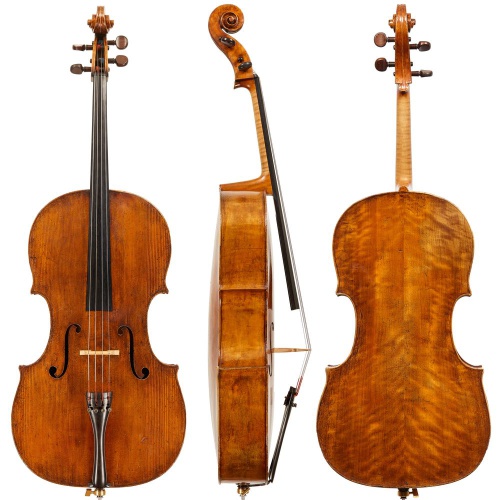
The overall size of Guadagnini’s cellos stays fairly constant, slightly undersized by modern standards but extremely effective for modern soloists.
There are approximately 40 known cellos by the industrious Giovanni Baptista Guadagnini, with around ten from each of the four principal cities in which he worked – Piacenza, Milan, Parma and Turin. Guadagnini cellos have long been favoured by soloists for their compact and focused sound, rich timbre and exceptional clarity and projection. The ex-Havemeyer dating from circa 1743 is one of the earliest and best preserved examples and comes up for sale this May for the first time in over 60 years.
A restless innovator and experimenter, G.B. Guadagnini frequently restyled his instruments, varying their outline, f-holes, arching, edges and varnish. Indeed the instruments from each of the cities in which he worked have such a unique personality that to an uninitiated observer they could easily appear to be the work of different makers. Yet despite the numerous stylistic variations, the overall size of Guadagnini’s cellos stays fairly constant, slightly undersized by modern standards but extremely effective for modern soloists.
Guadagnini’s connection to the influential cellist Carlo Ferrari is well documented and this almost certainly led to a steady stream of cello commissions. But it’s also worth considering that circumstances in Cremona had created a market opportunity. Virtually no cellos were produced in Cremona between the death of Stradivari and the appearance of Storioni in the late 18th century. For whatever reason, the active Cremonese makers – the Bergonzis and Guarneri ‘del Gesu’ – for the most part stayed away from making cellos. If a cellist wanted to commission an instrument in the early 1740s, they would almost certainly have had to look outside Cremona, which no doubt provided a substantial opportunity for Guadagnini in Piacenza just a short distance to the south.
The ex-Havemeyer Guadagnini cello of c. 1743
The back of this handsome cello is made in two pieces of attractive native northern Italian poplar with wide flames fanning steeply downward from the centre joint. The wood is left thick in the centre of the back with the inside gradiations finished roughly. Two roughly shaped locating pins are offset to either side of the centre joint in typical Guadagnini fashion. The arching is remarkably flat and yet full at the edges and at the flanks. Several deep gouge marks in the C-bouts suggest a hasty rough-out of the arching. The purfling is wide with a centre strip in walnut and is set rather close to the edge in a shallow channel. At the corners the purfling mitres are more squashed together than precisely set.
The ribs are in poplar matching the back and are slightly shallow at 10.3 cm, with virtually no taper from upper to lower blocks. Interestingly the interior linings in willow have been left square and untrimmed, perhaps betraying the haste of the maker. The corner blocks are in spruce cut on the slab with the linings let in from the C-bouts. The upper block in willow is original to the instrument and bears two nail holes.
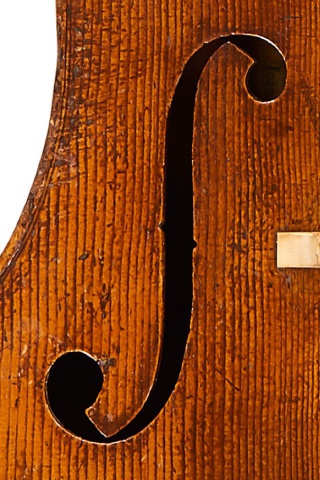
With narrow upright stems and round holes, the f-holes are very different from the oval-lobed and wide-set patter of his later periods.
The spruce front has a wide and slightly irregular grain, and the arching of the top is even more flat than that of the back. Century-old scratches from errant bow strokes in the bass C-bouts testify to the cello’s substantial width in the centre section. The f-holes, which are set close together with narrow upright stems and round holes, are very different from the oval-lobed and wide-set pattern of his later periods and bear a striking resemblance to the cello f-holes of Giuseppe Guarneri ‘filius Andrea’. Indeed, there’s a compelling theory that Guadagnini’s first cello model was inspired by an instrument by ‘filius Andrea’ that was brought to him for repair. That cello, now known as the ‘Grossman’, has a replacement front and head made by Guadagnini at about the same time as this cello. The treble f-hole of the ‘Havemeyer’ is a full 3–4 mm lower than the bass but the asymmetry is harmonious overall.
Century-old scratches from errant bow strokes in the bass C-bouts testify to the cello’s substantial width in the centre section.
The scroll is Cremonese in proportions and fluid in design. The volute is deeply hollowed through the second turn with a high comma rotating an extra quarter turn and terminating in an eye of slightly diminutive proportions. The last turn and the eye of this scroll are also highly reminiscent of Giuseppe ‘fillius Andrea’. The fluting at the back of the head is hastily worked and shallow with the centreline at times staggeringly off-centre.
One of the most enchanting aspects of this cello is its glorious thick, honey-coloured varnish. Largely undisturbed and unpolished, the varnish rivals that of any of the great Cremonese makers.
– Jason Price
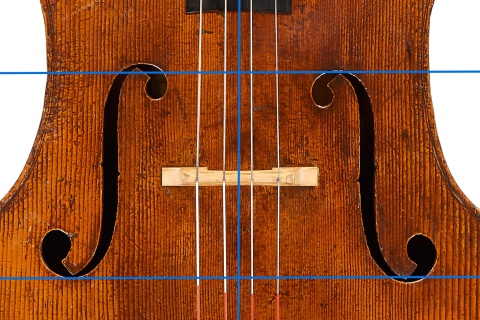
The treble f-hole is a full 3–4 mm lower than the bass.
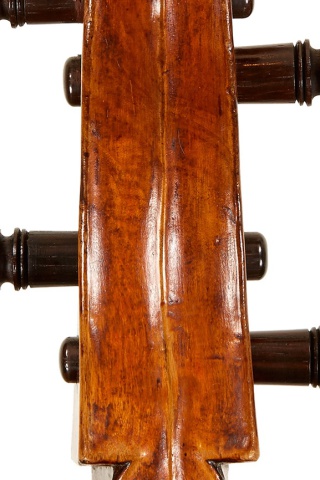
The fluting is hastily worked with the centreline at times staggeringly off-centre.
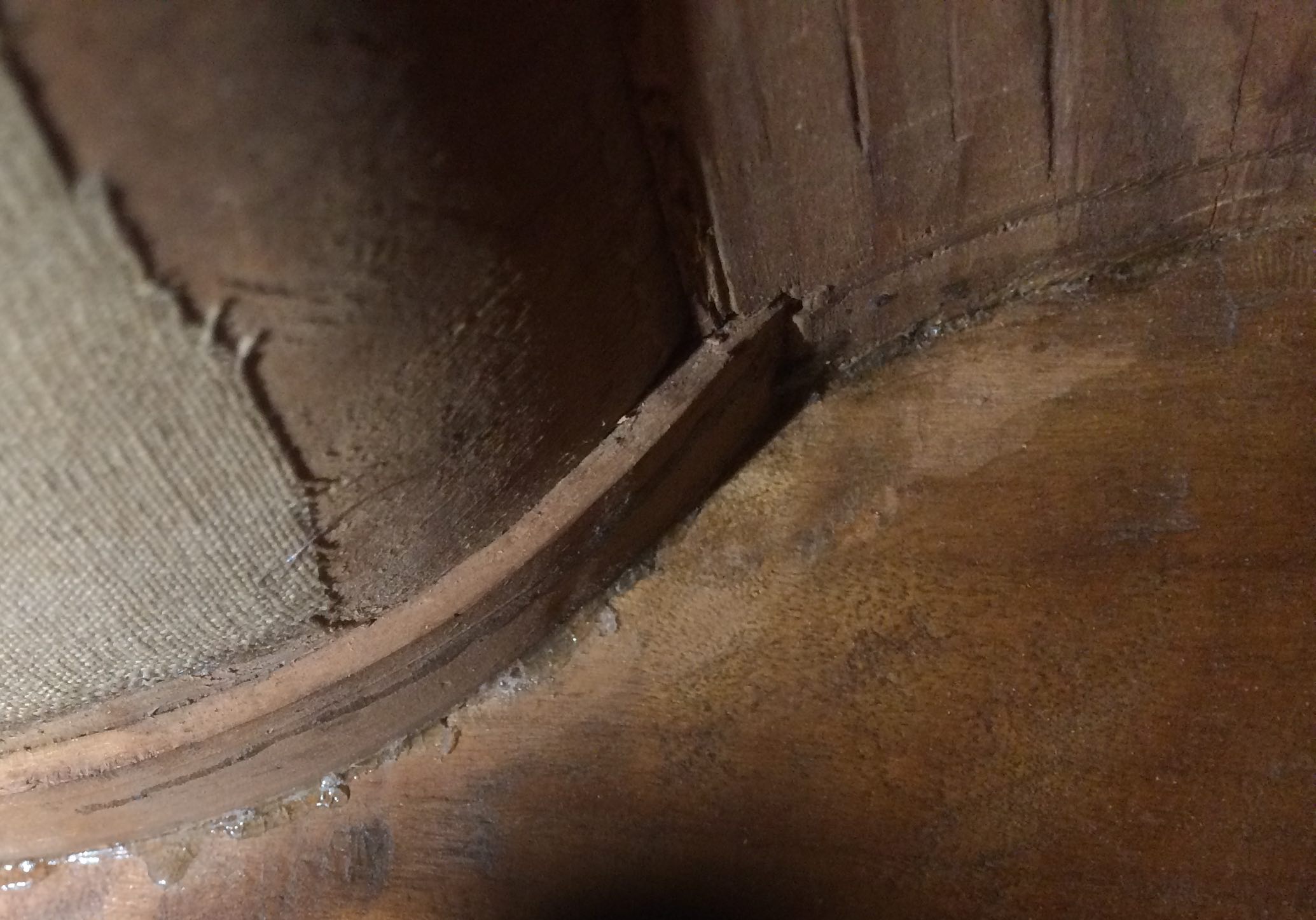
Centre bout linings left square and set into slab cut spruce corner blocks.
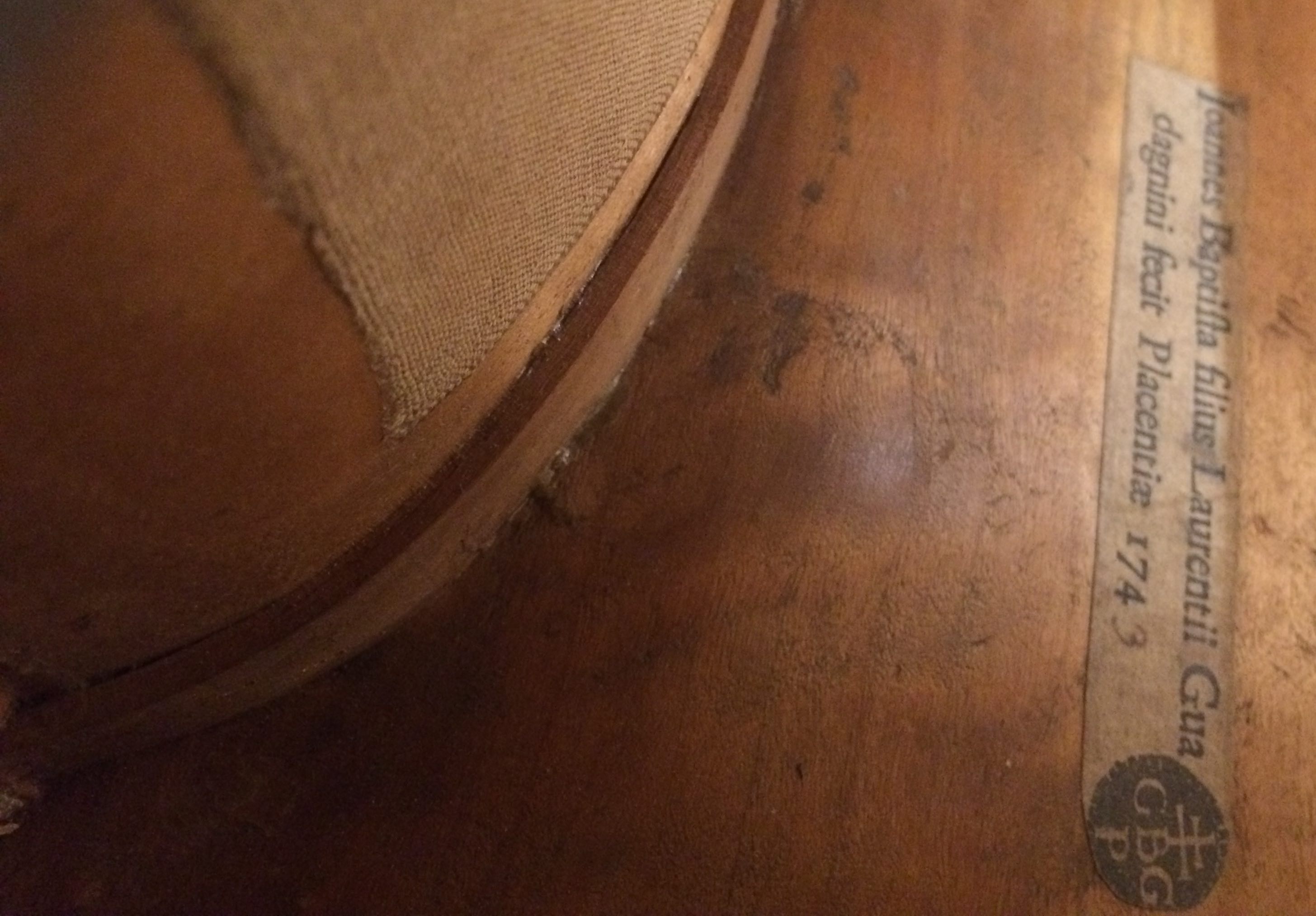
Linings in willow left square and untrimmed.
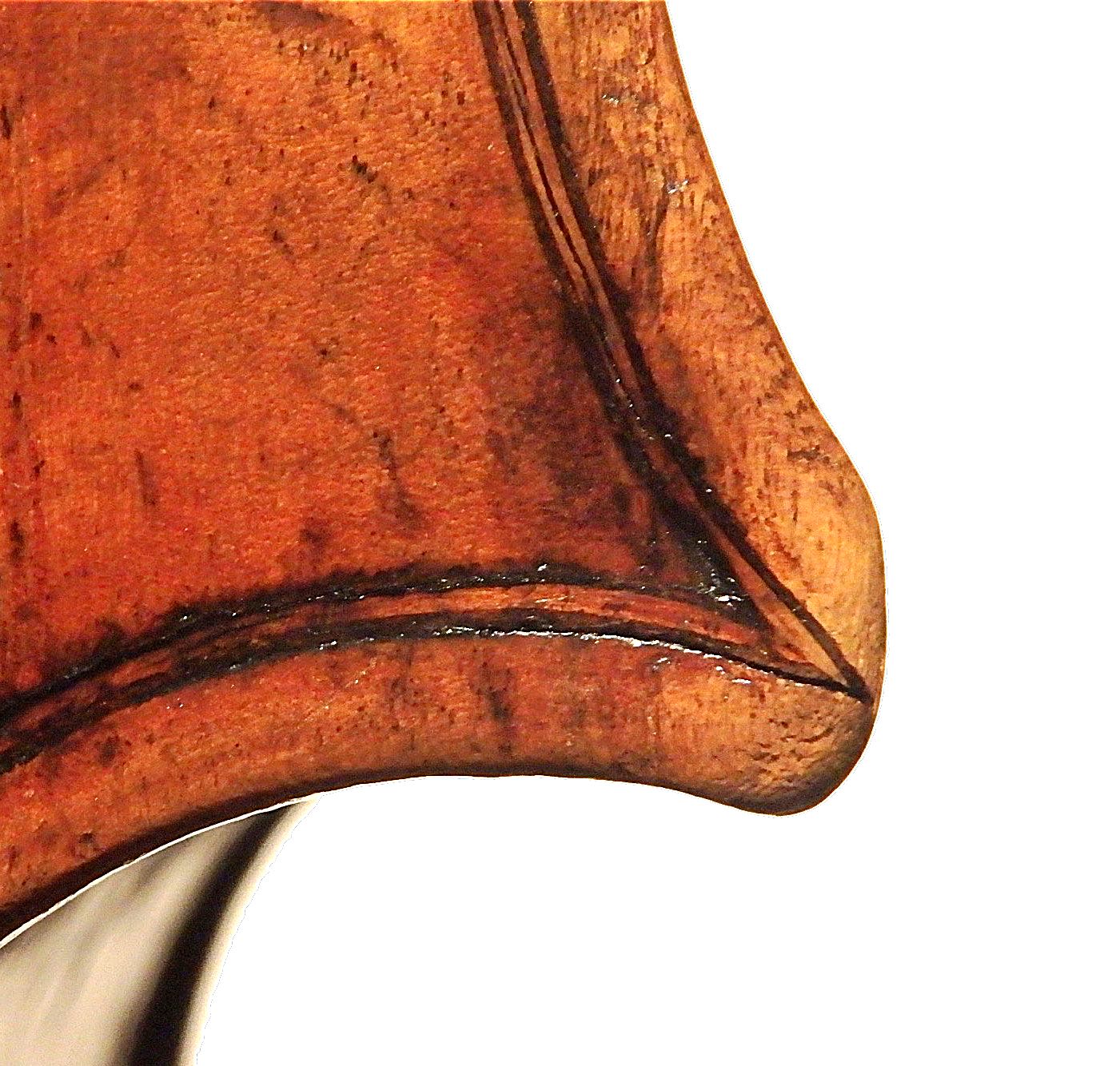
Purfling mitres extending through the extremes of the corner, more squashed together than precisely set.
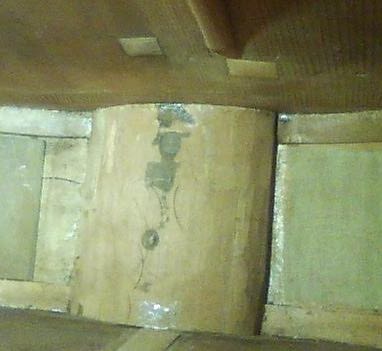
The original upper block with filled nail holes.